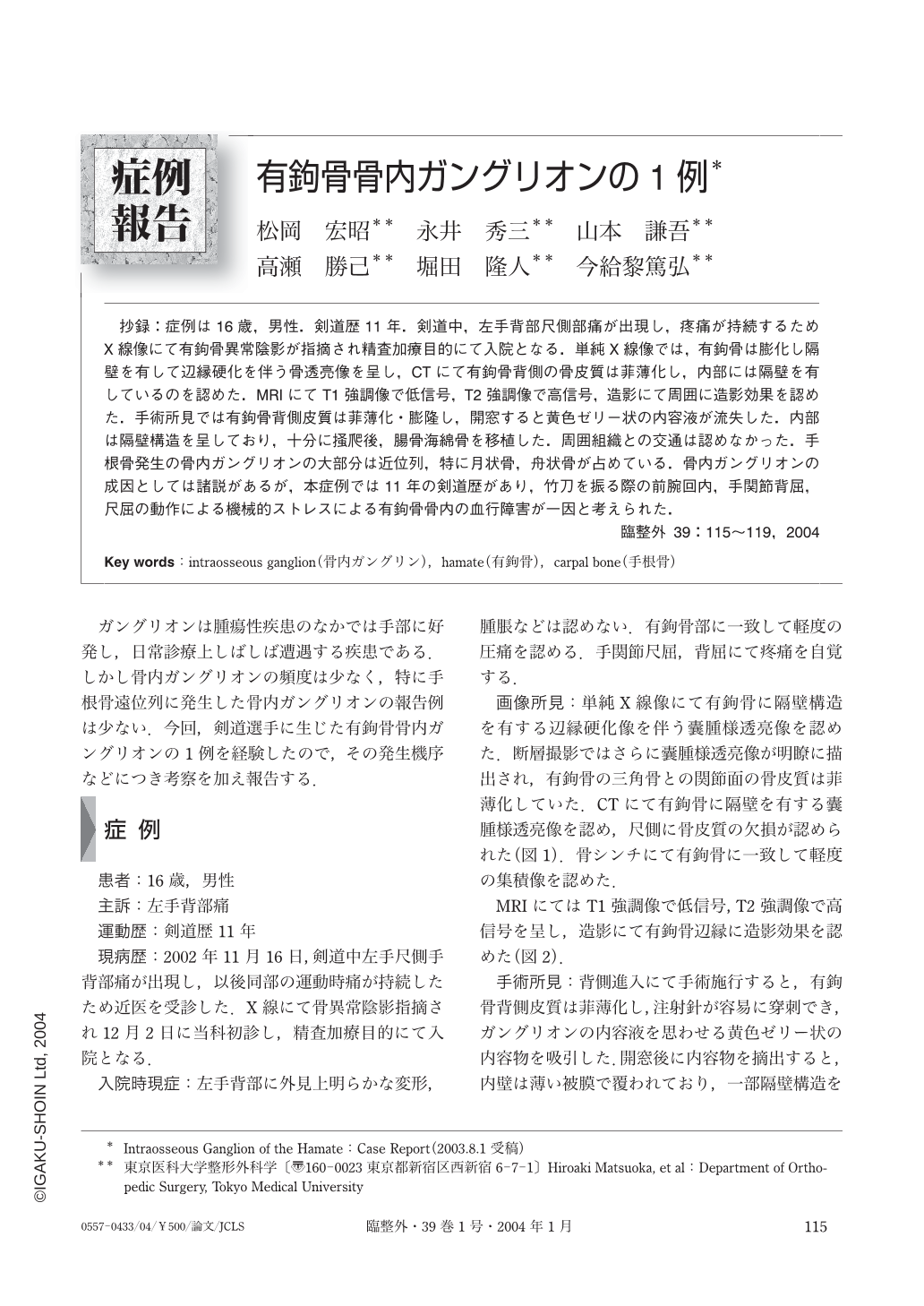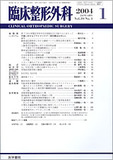Japanese
English
- 有料閲覧
- Abstract 文献概要
- 1ページ目 Look Inside
抄録:症例は16歳,男性.剣道歴11年.剣道中,左手背部尺側部痛が出現し,疼痛が持続するためX線像にて有鉤骨異常陰影が指摘され精査加療目的にて入院となる.単純X線像では,有鉤骨は膨化し隔壁を有して辺縁硬化を伴う骨透亮像を呈し,CTにて有鉤骨背側の骨皮質は菲薄化し,内部には隔壁を有しているのを認めた.MRIにてT1強調像で低信号,T2強調像で高信号,造影にて周囲に造影効果を認めた.手術所見では有鉤骨背側皮質は菲薄化・膨隆し,開窓すると黄色ゼリー状の内容液が流失した.内部は隔壁構造を呈しており,十分に掻爬後,腸骨海綿骨を移植した.周囲組織との交通は認めなかった.手根骨発生の骨内ガングリオンの大部分は近位列,特に月状骨,舟状骨が占めている.骨内ガングリオンの成因としては諸説があるが,本症例では11年の剣道歴があり,竹刀を振る際の前腕回内,手関節背屈,尺屈の動作による機械的ストレスによる有鉤骨骨内の血行障害が一因と考えられた.
We report a rare case of intraosseous ganglion of the hamate bone in a 16-year-old man who had engaged in kendo (Japanese fencing) for over 11 years. There were no communications between the inner portion of the bone and the surrounding tissue. Intraosseous ganglia of the carpal bones usually involve the bones in the proximal row of bones, particularly the lunate bone and the navicular bone. A variety of theories have been proposed to explain the etiopathogenesis of intraosseous ganglion. Our patient had engaged in kendo for over 11 years, and the patient's condition is thought to have been at least in part induced by intraosseous circulatory disturbances in the hamate bone due to the mechanical stress produced by repeated blows (with a bamboo sword) to the wrist joint with the arm in pronation and the wrist joint in dorsal and ulnar flexion.

Copyright © 2004, Igaku-Shoin Ltd. All rights reserved.


